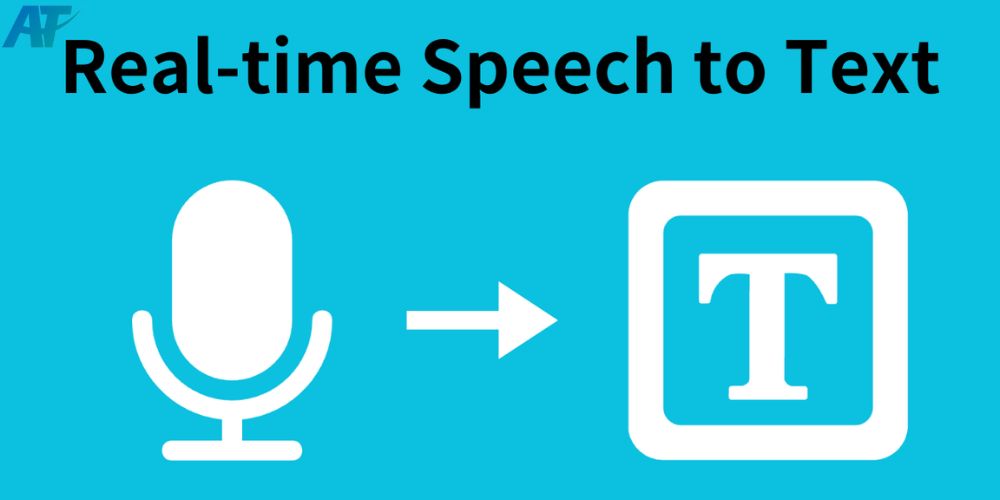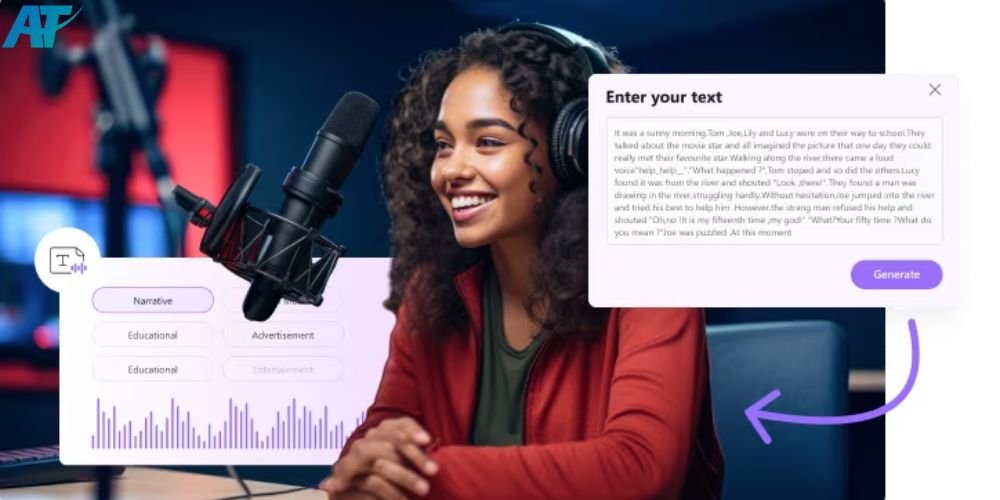In today’s fast-paced digital landscape, real-time speech to text software has emerged as a transformative technology, enabling seamless conversion of spoken language into written text. This software is widely used in various industries, from education and healthcare to media and customer support, revolutionizing how people interact with technology. This article, AT Technology and Consultancy Joint Stock Company (ATTECHSOFT) dives into the essentials of this software, its key features, applications, and the numerous benefits it offers.
What is real-time speech to text software?
Real-time speech to text software refers to a technology that uses Artificial Intelligence (AI) and Natural Language Processing (NLP) to transcribe spoken language into text instantly. Unlike traditional transcription services that require manual input or delayed processing, this software operates in real-time, delivering live transcriptions during conversations, events, or meetings.
The software is designed to be highly adaptive, handling various accents, speech patterns, and even environmental noise, depending on its sophistication. Most modern tools also integrate machine learning to improve transcription accuracy over time by learning from user interactions.
How it works:
- Speech recognition: The software listens to spoken input through a microphone or audio feed.
- Audio analysis: It processes the sound waves, identifying words and phrases using advanced algorithms.
- Transcription: The recognized speech is transcribed into text in real time, often displayed on a connected device or platform.
- Feedback loop: With machine learning, the software refines its accuracy based on user corrections or context over repeated use.

Key features of real-time speech to text software
- Advanced speech recognition: Leveraging AI and NLP, the software achieves high levels of accuracy, capable of understanding different accents, dialects, and speaking speeds.
- Punctuation and formatting: Automatic punctuation and formatting features provide grammatically correct transcriptions, reducing the need for manual adjustments.
- Multilingual support: Many tools support multiple languages and dialects, catering to a global user base. This feature is essential for businesses operating in multilingual regions.
- Custom vocabulary and domain adaptation: The ability to incorporate industry-specific jargon, acronyms, or names ensures precise transcription tailored to specific needs.
- Noise cancellation: By filtering background noise, the software delivers accurate transcriptions even in less-than-ideal acoustic conditions.
- Real-time translation: Some advanced solutions offer live translation alongside transcription, making it ideal for international meetings or events.
- Speaker identification: In multi-speaker environments, the software tags individual speakers, making the transcription easy to follow and organize.
- Integration with third-party tools: Seamless integration with platforms like Zoom, Microsoft Teams, or Slack allows users to incorporate transcription capabilities directly into their workflows.
- Cloud and offline functionality: While many tools operate in the cloud for scalability and accessibility, offline functionality ensures usability in areas with limited connectivity.

Applications of real-time speech to text software
Education
In the field of education, real-time speech to text systems offers substantial benefits, particularly for students with learning disabilities. By transcribing lectures in real time, students can focus on understanding the content without worrying about note-taking, allowing them to engage more deeply in classroom discussions. Additionally, this technology makes it easier to create detailed class notes instantly, which can then be shared among students for better study material distribution. This enhances the learning experience by providing everyone with accurate, comprehensive records of lessons and lectures.

Healthcare
In healthcare settings, instant speech to text conversion plays a crucial role in streamlining documentation processes. Medical professionals, such as doctors and nurses, can use the software to record and transcribe patient interactions during consultations, saving time and allowing for better patient care. This automation significantly reduces the burden of manual data entry, improving efficiency. The software can also automate the transcription of medical reports and prescriptions, ensuring faster processing and reducing human error in documentation, which is critical in maintaining patient safety and operational efficiency.

Media and broadcasting
In the media and broadcasting industry, real-time speech to text software has become an invaluable tool for generating subtitles for live events, news broadcasts, and television shows. By providing real-time captions, the software improves accessibility for people with hearing impairments and helps comply with accessibility regulations. Journalists and reporters also benefit from this technology by being able to quickly document interviews, press briefings, or breaking news events, ensuring that content is accurately recorded and delivered on time for production or publication.

Corporate sector
In the corporate sector, real-time audio-to-text software enhances productivity and collaboration by providing accurate transcriptions of meetings, conferences, and discussions. This allows team members to stay aligned on key points discussed during meetings, especially in multi-party or virtual settings. Furthermore, the software supports live captioning for webinars or virtual events, helping to engage participants who may not be fluent in the presentation’s language or those who prefer to read along with the spoken content. This leads to better communication, engagement, and inclusivity in corporate events.

Customer support and call centers
For customer support teams and call centers, real-time speech to text software is a game-changer in managing customer interactions. By logging conversations instantly, companies can track customer queries, monitor service quality, and ensure compliance with regulatory standards. This automation allows agents to focus on providing better customer service rather than manually documenting each conversation. Additionally, agents can benefit from having immediate access to transcribed customer feedback and queries, which helps them address issues quickly and efficiently while maintaining high levels of customer satisfaction.

Legal and compliance
In the legal sector, immediate speech recognition is essential for creating accurate, timestamped records of court proceedings, depositions, and legal meetings. This helps legal professionals maintain precise documentation of discussions, which can be referenced later for clarity or legal purposes. The technology also ensures compliance by transcribing sensitive conversations, agreements, or negotiations in real time, reducing the risk of misunderstandings and errors in legal documentation. This is particularly important in environments where every word can carry legal significance.

Accessibility solutions
Real-time speech to text software has a significant impact on accessibility, especially for individuals with hearing impairments. By providing live captions during events, webinars, and online content, this software ensures that people with hearing loss can fully participate in digital communication and media. In educational settings, it allows students with hearing impairments to follow along with lectures in real time. In the public domain, it makes live broadcasts, podcasts, and presentations accessible to a broader audience, helping to foster inclusivity and equality in communication across diverse communities.

Benefits of real-time speech to text software
- Increased productivity: By automating transcription, professionals can save hours of manual effort, focusing on more critical tasks like analysis
- Enhanced accessibility: The software enables organizations to comply with accessibility standards, providing live captions for audiences with hearing impairments.
- Cost-effectiveness: Real-time transcription eliminates the need for hiring manual transcribers, reducing operational costs without compromising quality.
- Accuracy and consistency: With AI-driven improvements, the software offers consistent accuracy over time, ensuring reliable documentation.
- Improved collaboration: Sharing live transcripts during meetings fosters better communication among team members, especially in remote work scenarios.
- Scalable solutions: Whether for small businesses or large enterprises, these tools can handle varying levels of demand without significant investments.
- Real-time insights: Immediate access to transcriptions allows for faster decision-making and quick analysis of spoken content.

Conclusion
Real-time speech to text software represents a revolutionary step forward in how we interact with technology, bridging the gap between spoken and written communication with remarkable efficiency. Its applications span industries, including education, healthcare, corporate environments, and media, underscoring its versatility and necessity in today’s digital world.
Contact us for more detailed information!
Email: sales@attechsoft.com
Website: https://attechsoft.com/
